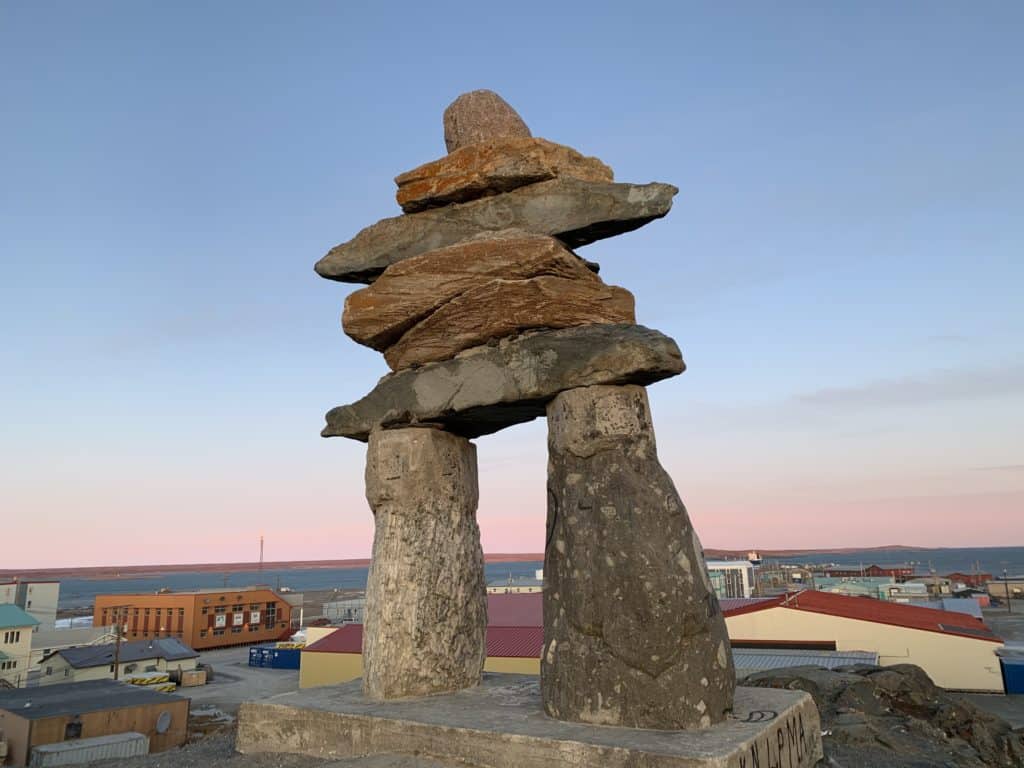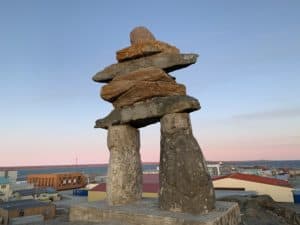“Inuit say that the purpose in life is to live a good life,” writes author and former Nunavut educator Shirley Tagalik, who was kind enough to lend her expertise to the first issue of Root & STEM, Pinnguaq’s resource for educators.

Tagalik, the writer behind Inuit Qaujimajatuqangit: What Inuit Have Always Known to Be True, prepared a series of modules for readers of the magazine, helping them to understand the Inuit expectations for living a good life.
“As we developed this issue of Root & STEM we were surrounded by ways technology is being used to combat climate change. At the heart of this crisis we couldn’t help but recognize that the types of stewards humans can be to our world will greatly influence our use of technology,” says Jennie Cross, Director of Education for Pinnguaq.
“Exploring Inuit values provides an opportunity for students to explore values most important to them and understand how these values impact their behaviour.”
In her introduction in the magazine, Tagalik wrote: “Inuit Elders say that although the context we live in is always dynamic, our beliefs never need to change, and this is why it is so important to clarify values for youth. Inuit also say their teachings are helpful to anyone, and are not just for Inuit. With this in mind, we hope you will explore these Inuit understandings of how to live well in a dynamic world and that, in doing so, they will help you and your students set personal goals as agents of change in effectively meeting life’s challenges in order to live a good life.”
For more information about the four modules created and shared by Tagalik, please view Root & STEM online. Limited printed copies may be available upon request by emailing STEAM@pinnguaq.com.

Inuit Values
In her first module, aimed at students in Grades 1 through 3, Tagalik explores the values Inuit hold and how they help to determine the way they live their lives.
She writes that it is important to examine not only the understanding of the values, but also the underpinning beliefs.
“Students will learn that the values we hold help to determine the way we live our lives. Therefore, it is important to examine our understanding of our values, as well as the beliefs that underpin them. Our values are usually set and reinforced by the teachings of our parents. To Inuit this is known as inutsiaqpagutit. These teachings provide lifelong expectations for our behaviour,” says Tagalik.
The Inuit Values module teaches students that a value is a belief. Students examine the values most important to them and understand how these values impact their behaviour.
Serving Others
The second module, Serving Others, provides insight into pijitsirniq (serving others, working for the common good) and how this is linked to becoming a respectful steward through avattimik kamatsiarniq (stewardship).
“Inuit are known as a resilient people who live in harmony in a harsh environment through innovation and resourcefulness. Students will understand how living according to these cultural principles has helped Inuit to succeed over generations, as well as to protect the environment they depend on for successful living,” writes Tagalik.
In the Serving Others module, Grades 4 to 6 students gain familiarity with the Inuit described concepts of avattimik kamattiarniq (respectful stewardship), pijitsirniq (serving) and qanurtururangniq (being resourceful and innovative). Furthermore, they will gain insight into the cornerstones of being respectful and taking responsibility in terms of serving a shared purpose and the common good.
Becoming Capable
Through the third module, Becoming Capable, students in Grade 7 to 9 learn to describe the processes of inunnguiniq (becoming a capable human being) and pilimmaksarniq (skills acquisition). They’ll learn how these processes contribute to forming a capable human being and will be able to link these to the perspectives of environmental stewardship among Inuit.
“Inunnguiniq is the process used to train everyone to become capable members of the community. Being capable required that each person was a contributing member of society with a strong sense of both belonging to and responsibility for the collective,” writes Tagalik.
“The process of training a community member to become capable relied on the aspects of having the correct sense of group belonging, and on mastering skills in order to assist the collective.”
In this module, participants are asked how inunnguiniq differs from Western styles of education, how the expectations for becoming successful differ between Inuit and Western society, and how these differences impact one’s view on their place in the environment.
Inuit Leadership
The final module in Tagalik’s lesson plan is entitled Inuit Leadership and is directed towards students in Grade 10 through 12.
“The Inuit perspective on leadership is different from the Western one in that it is more about stewardship and taking responsibility than about influence, power or governance. Leadership qualities are identified in children and are nurtured throughout the life of the individual. A leader is considered someone who is willing to do the most unsavoury of tasks in order to serve other people,” writes Tagalik.
“Inuit leadership is characterized by willingness to serve the common good without the expectation of recognition or reward. It does not require specific expertise or knowledge; it is rather an attitude of the heart.”
Through this module, participants will be able to describe the expectations expressed in the Inuit worldview around stewardship, environmental responsibility and a respectful relationship with nature. They will understand how Inuit apply the principle of qanurtururangniq (resourcefulness) to prepare individuals for this critical role in life.
By the end of the module, students will be prepared to identify the characteristics of leadership and stewardship in the Inuit worldview and explain how these are taught and applied as cultural expectations. Furthermore, participants will be able to summarize the impact on the environment when these principles are not applied.
Learn more about Root & STEM
The modules referenced above were included as Educator Resources in the first issue of Root & STEM, Pinnguaq’s magazine. In addition to print versions, which can be requested by emailing STEAM@pinnguaq.com, the magazine is available on the Pinnguaq website, through Magzter and as a PDF.
Those interested are also invited to subscribe to Pinnguaq’s Education E-Newsletter, to receive materials, resources and inspiring stories of STEAM in the real world, delivered right to their inbox.

